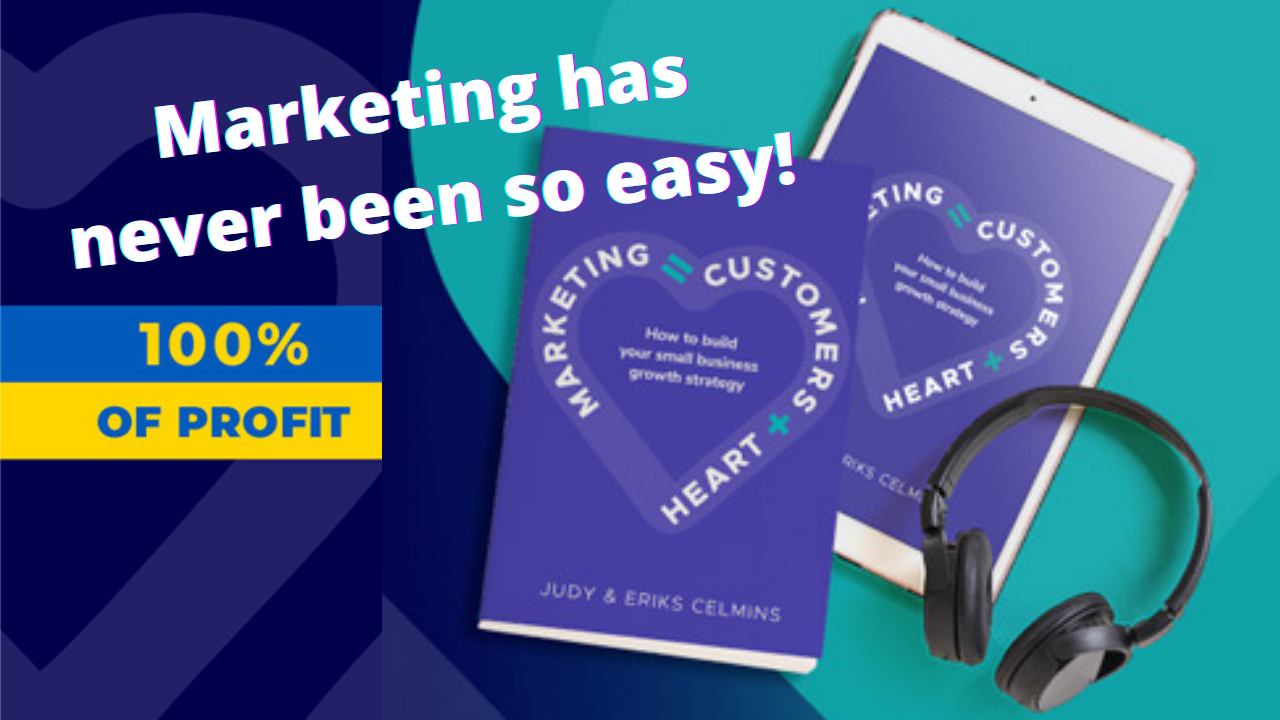Humanizing Market Research and Building Trust with Customers
The common thread in Bridging The Gap Between Marketing & Market Research, is 'Humanising' Research.
If you missed my earlier article on it, you can check it out here.
Making it a warm, friendly, even fun experience, so participants feel comfortable sharing their time, opinions and feelings with you.
Of course, data collection has to be an organised, structured process. But to engage with people - your VIP customers - and uncover actionable insights, not just data, it’s no different to your other brand touchpoints.
Where it’s not just about the transaction, but building a strong relationship and longer Customer Lifetime Value.
Because the customer is in control of your reputation, and they’ll tell their social circles how they feel at your touchpoints, as either a thumbs up or down.
Here are 6 Tips to consider when building your customer research or feedback projects.
Tip #1: It's A Matter of Trust
All marketing is relationships, and for your insights program to be an effective touchpoint, customers must feel safe and respected.
Billy Joel called it a “A Matter of Trust”. Where people can open up to you, and not the floodgates to sophisticated, social media re-targeting, or just plain, old-school, hard-sell spam. The issue didn’t just start with Facebook!
Three things to tell participants, to build a solid foundation of trust…
2. Make it clear the information won’t be shared with any third-parties for sales purposes.
People are well aware that databases are often on-sold, exposing to them to spam.
And BTW that includes strictly avoiding the temptation to contact and upsell a customer based on a survey question response! This is a legal data protection nightmare.
3. Be transparent, give them the name of the project client or sponsor. This used to be a no-no to avoid bias. But people always try to guess anyway, and any brand comparison questions will narrow the field considerably.
If really necessary, promise to reveal the name at the end.
Participants will actually be more honest if they know the purpose of the study. Which brand they’re helping and why. Rather than a repetitive form-filling for no obvious reason. Especially if it’s an unavoidably longer survey or activity.
Tip #2: Think of research as people, not stats.
Its very easy for a marketer to be immersed in data. If not overwhelmed, by an endless stream of metrics, KPIs, Net Promoter Scores etc. Understandably essential for management to run the business.
But it can mean being disconnected with the source of all the numbers. Real, flesh & blood people who are unique individuals, with their own stories, and experiences with the brands in their life.
What research data analysis CAN do is generalise product/service usage behaviour.
What it CAN’T do is generalise what makes people tick, because we’re all different.
Of course you can access census data and demographic profiles of target customers, including in your own database. Which helps in refining your marketing focus.
But true differentiation on emotional drivers can only come from understanding the psychographic make-up of your target. And how their everyday life influences their brand purchasing and usage habits.
For example… a media content producer might say “we’re targeting 25-39 women”.
Do you actually know a 25-39 woman? Who is this person?
OK, logically the life-stage of a 25 year old is often going to be different from a 39 year old.
But it’s not only about different life-stages, but head-space.
What about their taste in music, for instance? The reality is there are 20-somethings who love 90s-pop, and those in their 30s who listen to the latest hip-hop all-day.
Resulting in bland commodity marketing, when not backed up with deeper insights one person at a time.
Tip #3: Engage the Whole Brain
For good reason research is often a Left-Brain activity, tied-up in logic, metrics and facts. It's about highly-structured tasks and content.
Surveys being the most common form of research that most of us are exposed to as marketers – whether conducting a study, or being a participant in someone else’s project.
Which is all fine in terms of organising the activity. But not always helpful when it comes to integrating with marketing brand values, and reaching into our consumer's head. To find the deeper, emotional drivers in the Right-Brain.
Traditionally, doing a survey is often regarded by marketers, as a necessary but painful, inconvenient brand-health commitment, like going to the dentist.
Hardly the source of inspiration, creativity and innovation. And that aha! moment of revelation. That perfectly articulates the core of an elusive issue, in the authentic language of the consumer.
Which I suggest ought to be the objectives of a true insights project – beyond just fixing problems.
Which means theoretically, the research methodology must also be geared towards engaging the participant’s right brain to successfully capture those insights.
But in practice, the process is so often a very rational, form-filling experience. When more conversational forms of research can open up a wider world of possibilities.
In my own research experience, there have been many examples of insights sparking innovative content, promotional activations and marketing.
All highlighting the ongoing debate about the difference between data and insights.
I suggest it’s about being actionable. If a finding can be directly translated into marketing or product execution, then it’s a valid insight into consumer needs and motivations.
Especially if it describes the reason WHY behind the stats. The real drivers at the heart of your consumer acquisition & retention strategies.
Tip #4: Make it inviting
Instead of asking people to “fill out a survey”, ask for their help to improve your product or service, to make it better for them.
In this increasingly automated world of bots, people respond really well to personalised, human contact.
And being asked for their opinion by a decision-maker. You could even send a short video from the CEO as an explainer of the project purpose.
The invitation can be sharpened further by reflecting the target you’re trying to reach. This especially helps if the research is aimed at a particular segment of your database. Which BTW is often more productive than a more generalised, catch-all exercise.
So for a sports club membership survey, for instance, you might say (from the CEO) “I invite you as a long-time, valued member, to help me plan next season, along with others like yourself. Your experienced opinions will be invaluable.”
This also creates a ‘sense of community’ that helps people feel part of a group, when surveys are usually completed in isolation.
Tip #5: Incentivise emotionally
While its necessary to basically thank and reward people for their time in helping you, the tone of how this is framed makes a big difference to engagement
It’s not necessarily about ramping up the cash value. Because there’s a point where ever-escalating rewards won’t attract someone to a perceived low-engagement experience.
It’s about people feeling valued, not the value of the incentive.
WIIFM (what’s in it for me) needs to be an emotional benefit of ‘making a difference’, as well as cash or merchandise prize-draws.
Also consider a creative ‘money can’t buy’ gift, which is a natural for a sports, media or entertainment brand. Where you’re able to offer an exclusive backstage, meet the stars, type of experience.
Which will also generate social sharing in that person’s circle, amplifying your branding, all from one insights project.
Tip #6: Write questions like a friend, not a data scientist
Or using your industry’s jargon, understandable only to your team. Which is why testing your questions with outsiders can help.
On the other hand, you don’t have to be overly matey either. And avoid try-hard slang.
Plain & simple language is the mantra – think Twitter with the disciplines of word economy and one thought at a time.
The Takeaway
Humanising your research is turning your database into a conversation.
Whether that’s in a survey, so it’s more interactive and enjoyable than filling out a form. Or in a discussion forum.
Hungry for more? Marketing = Customers + Heart is your road map to building your growth strategy.






